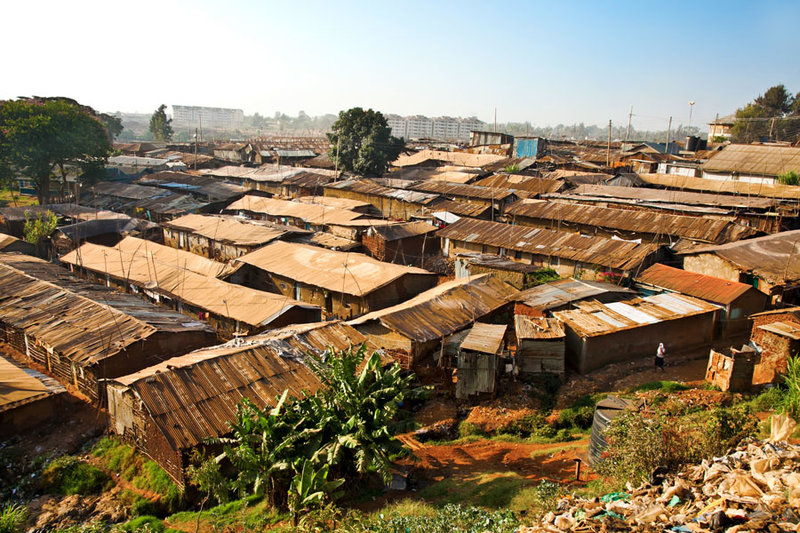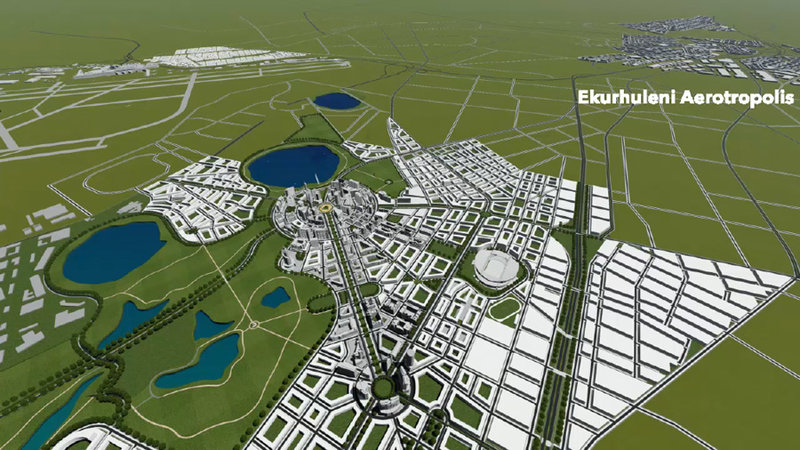Aviation Impact
Can airports help lift communities out of poverty?
The
future
of US air
traffic control:
the third option?
Growing public pressure is prompting the aviation sector to contribute more to ending poverty and boosting trade opportunities in emerging countries. Whether directly or indirectly, the industry has welcomed the challenge and is looking at ways to help. Adele Berti finds out more.
While it is common knowledge that airports are catalysts for tourism growth and key to a country’s national and international trade relations, they are still often seen as ultimately serving those who can afford to fly – the wealthiest in any society.
A recurring topic in the industry, this dichotomy is now more than ever in the public domain thanks to the unstoppable rise of social media platforms.
In March this year, the topic sparked fresh controversy on Twitter, in a series of threads involving the International Civil Aviation Organization (ICAO). With several users questioning the claim that aviation drives sustainable growth given the huge carbon footprint of flying, the ICAO responded that, “international flight lifts communities out of poverty.”
The claim is a bold one, which if true will go a long way to establishing positive credentials for the role of airports in sustainability. Can aviation really help drive sustainable growth or is it destined to remain an elite service?
Image courtesy of
The democratisation of mobility
According to Haldane Dodd, head of communications at the Air Transport Action Group, a non-profit organisation representing all sectors of aviation, the answer is a no-brainer: the industry’s positive impact goes far beyond serving the wealthy.
Directly employing over ten million people worldwide and supporting another 55 million jobs between supply chain and tourism, Dodd explains that aviation has given growth opportunities to all types of communities – both locals and travellers.

Image courtesy of
“The lowering of airfares by 70% since the 1970s means the benefits of air travel are available to more people today than ever before, probably one of the most rapid democratisations in any form of mobility,” he says.
“Travel of any form may not be available all across the world but our services also support the millions of tourism workers.”
This opens up to the idea that, often indirectly, aviation – and airports in particular – has the potential to boost underdeveloped communities in loco. As Dodd puts it, “poverty reduction is a cross-cutting issue and the aviation sector has a very important role to play in supporting cities, infrastructure and economic growth.”
Eero Knuutila is Head of Service Development at Helsinki Airport.
Image courtesy: Helsinki Airport
The aviation sector has a very important role to play in supporting cities, infrastructure and economic growth
New opportunities for local producers
In its 2017 Aviation Benefits report, ICAO revealed that the Caribbean region owes aviation much of its popularity and revenues with over 90% visitors reaching the likes of Cuba, Martinique, Saint Lucia and more via plane.
As ACI World director general Angela Gittens confirms, developing countries are hugely reliant on trade and tourism, which is facilitated by the presence of airports to connect them with the world.
All the more, airports are gradually undertaking projects catered to their communities’ main sources of revenues.

Image courtesy of
This is the case of Mariscal Sucre International Airport in Quito, Ecuador, and its Nuestra Huerta (Our Garden) programme that bids to integrate small agricultural producers and support internal commercialisation in the community. It also involves training for procedures including agricultural and manufacturing practices, industrial safety, social responsibility, entrepreneurship and innovation and is now finally starting to take shape.
As Gittens explains, Kenya’s example is equally relevant. “In Kenya, horticulture is the fastest growing sector and is ranked third after tourism and tea as a foreign exchange earner,” she says.
Here, the cut flower industry generates more than 100,000 jobs, annually generating some $1bn in foreign exchange. “More than 90% of fresh horticultural products are transported by air freight. Flowers picked in Kenya in the morning are able to reach markets in Amsterdam by evening.”
More than 90% of fresh horticultural products in Kenya are transported by air freight
The rise of airport cities: Ekurhulen’s aerotropolis master plan
Nevertheless, there is still a long way between (more or less) indirectly supporting local markets to ‘ending poverty in all its forms everywhere’, which is one of the United Nations’ 17 Sustainable Development Goals. Yet, ICAO is doing its bit.
On behalf of the UN, ICAO is involved in a number of initiatives aimed at supporting poverty reduction. These include developing a Global Air Transport Plan that will help the agency foster the construction of an economically viable civil aviation system and facilitating States' access to financial resources destined for connectivity and infrastructure projects. Combine that with the prospect of demand for air travel to double by 2034 and the omens seem to be good.
Moreover, ACI forecasts that if such demand is met, it would directly generate 5.5 million jobs and $1.5 trillion of GDP to the world economy, with $4 trillion coming as indirect and catalytic benefits. According to Gittens, this paves the way for the evolution of what she describes as ‘airport cities, opening a number of business opportunities targeting the communities they serve.
“Airports have evolved from infrastructure providers to complex businesses that produce considerable commercial development well beyond their perimeters,” she says. “The land surrounding the airports has become a focal point for a range of economic activities that thrive on long-distance connectivity.”

Image courtesy of
In 2017, plans to deliver such a concept were approved in South Africa, where the city of Ekurhulen agreed on an R8.1bn a year, 30-year aerotropolis master plan around Johannesburg’s OR Tambo International airport.
“The plan focuses on the redesign of the city’s layout, infrastructure and economy to be centred on a major airport,” explains Gittens.
“The aim of the aerotropolis is to diversify the Ekurhuleni economy and reposition it as an ideal destination for trade, investment and tourism.”
A key centre of air cargo movements in South Africa, the airport serves around 19 million passengers per year. The aerotropolis will be built within a 30km radius of it and will allow for the creation of economic hubs targeting different sectors.
According to Gittens, these include retail, aerospace, advanced manufacturing, logistics and distribution, research and development, health and life sciences, as part of a move that could ultimately decrease joblessness rates in the city and region.
Eero Knuutila is Head of Service Development at Helsinki Airport.
Image courtesy: Helsinki Airport
The aim of the aerotropolis is to reposition Ekurhulen as an ideal destination for trade, investment and tourism